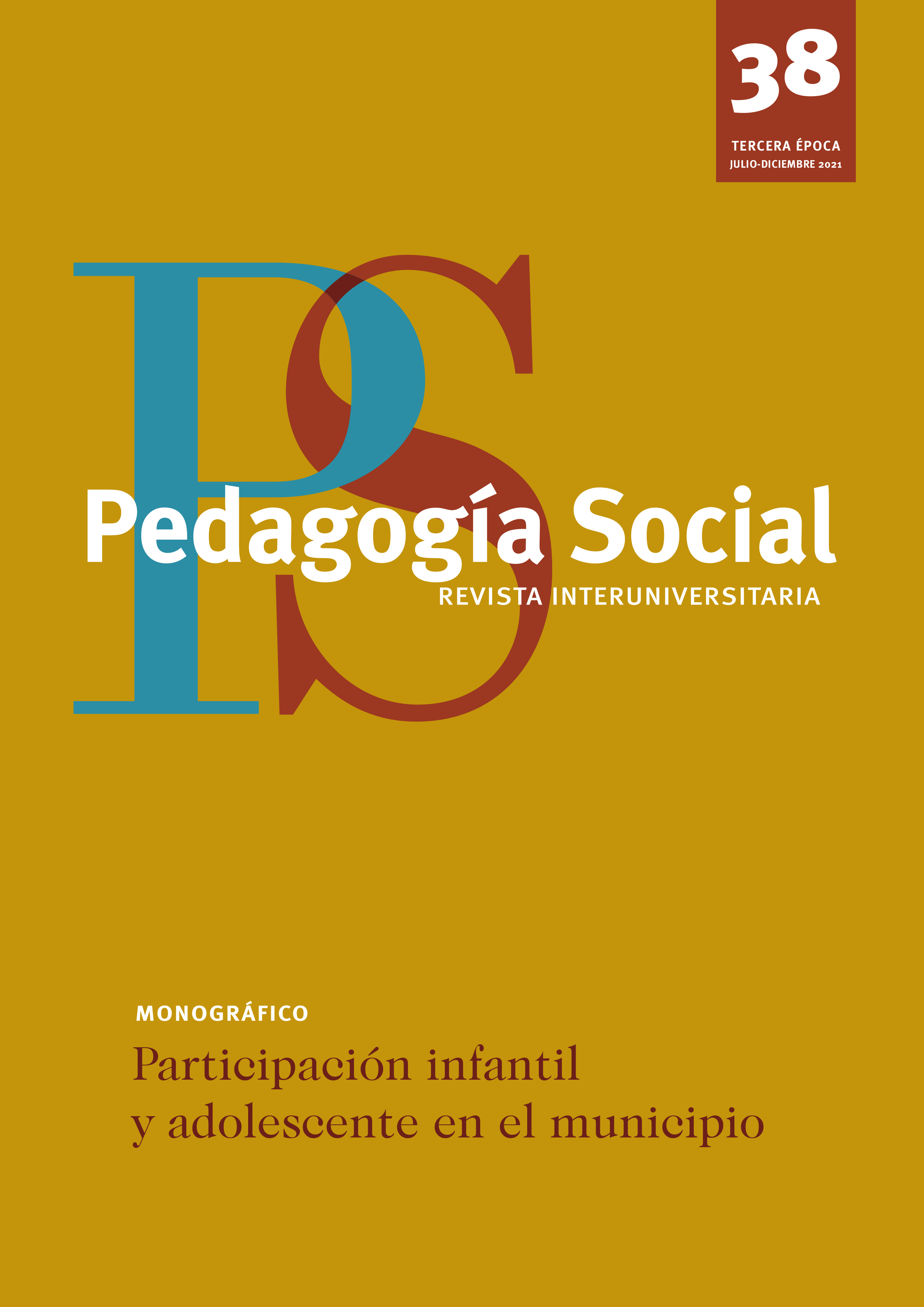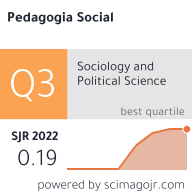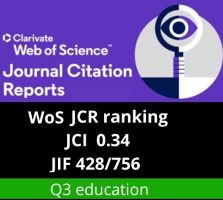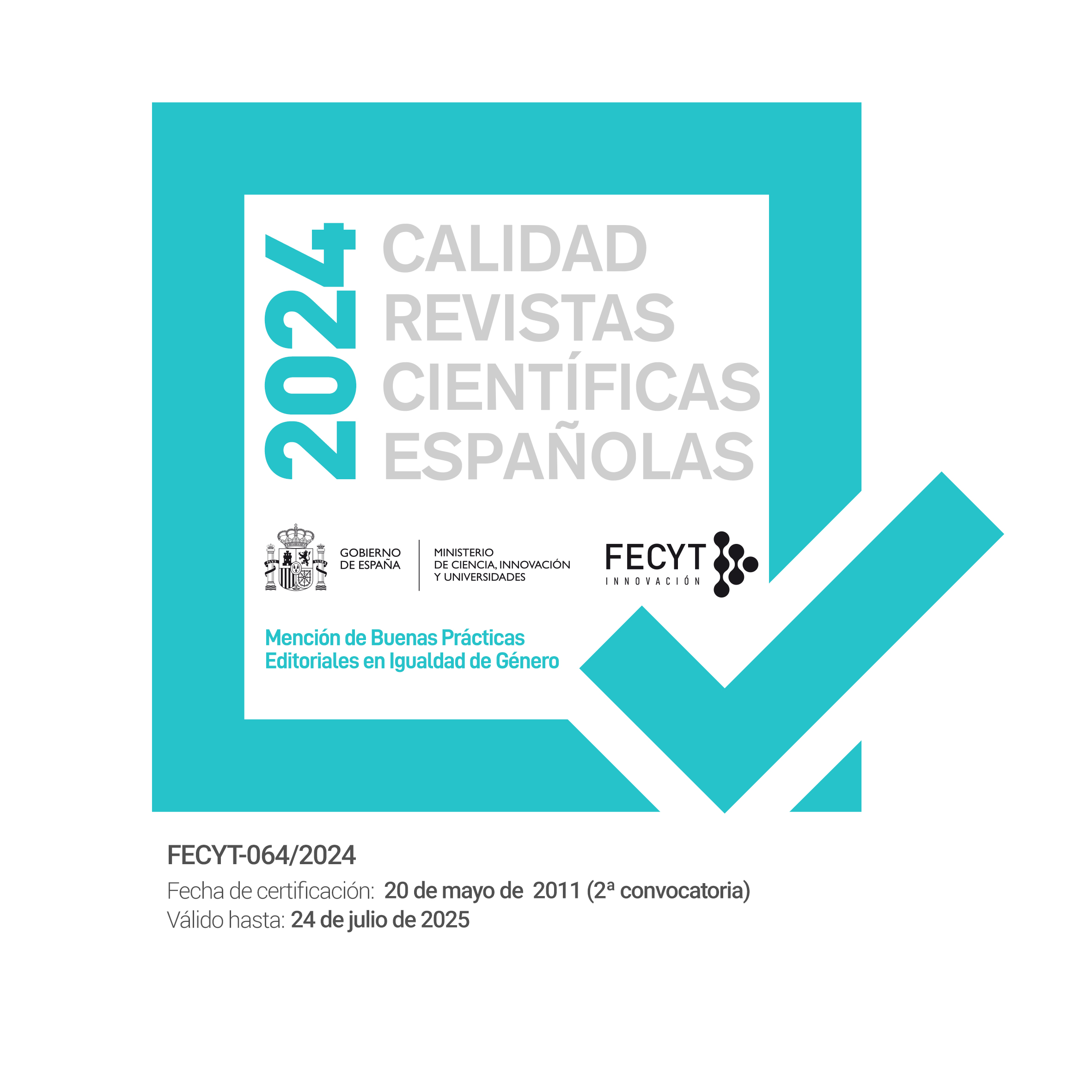Co-occurrence of different types of interpersonal violence in mexican adolescents
DOI:
https://doi.org/10.7179/PSRI_2021.38.09Keywords:
Exposure to violence, Child-to-parent violence, Dating violence, Adolescent, MexicoAbstract
Adolescence is not exempt from the presence of various phenomena and problems, one of them is interpersonal violence, which manifests itself in different ways and in different areas, and whose consequences have a significant impact on the population of young people and adolescents For this reason, the goal of this research was describing and analyzing the prevalence, frequency and relationship between different types of violence suffered and committed by adolescents. For this, 450 Mexican students participated, of which 259 were women and 191 men, aged between 13 and 19 years. In regard to the method, a quantitative approach was used with a non-experimental, cross-sectional and ex post facto design, with exploratory, descriptive and correlational purposes. Among the main results, a high prevalence of psychological violence committed towards parents and of control violence exercised and suffered during dating was identified. Besides significant differences were also found in the frequency of severe direct violence and of the isolation control suffered in the courtship, as well as physical violence towards the father, with men showing the highest score. Finally, the co-occurrence of different forms of violence was found, based on these results it is necessary to contemplate interpersonal violence in an integrated and not fragmented way, where the possibility that people may suffer or perpetrate more than a type of interpersonal violence in different contexts and stages of his life.
Downloads
References
Anthony, E. J. (1956). The significance of Jean Piaget for child psychiatry. British Journal of Medical Psychology, 29, 20-34.
Añaños, F., Fernández, M.P., & Llopis, J.J. (2013). Aproximación a los contextos en prisión. Una perspectiva socioeducativa. Pedagogía Social. Revista Interuniversitaria, 22, 13-28. doi: 10.7179/PSRI_2013.22.02
Arce, R., Novo, M., Fariña, F. & Vázquez, M. J. (2009). ¿Media la inteligencia emocional en el comportamiento antisocial de los menores? Un estudio de campo. In P. Fernández- Berrocal, N. Extremera, R. Palomera, D. Ruíz, J. M. Salguero y R. Caballero (Eds.), Avances en el estudio de la inteligencia emocional (421-425). Santander: Fundación Marcelino Botín.
Área de Investigación y Formación Social y Criminológica. (2017). La reincidencia en la justicia de menores. Generalitat de Catalunya: Centro de Estudios Jurídicos y Formación Especializada (Departamento de Justicia).
ASEDES (2007). Documentos profesionalizadores. Barcelona: Asociación Estatal de Educación Social.
Barrio, A., Torres, G., & Vidal, A. (2013) (Coords.) Plans de treball amb joves infractors. Barcelona: Generalitat de Catalunya. Centre de Estudis Jurídics i Formació Especialitzada.
Becker, H. S. (1971). Los extraños. Sociología de la desviación. Buenos Aires: Tiempo contemporáneo.
Bernfeld, S. (1972). Psicoanálisis y educación antiautoritaria. Barcelona: Barral.
Borum, R., Bartel, P., & Forth, A. (2003). SAVRY Structured Assesment of Violence Risk in Youth. Consultation version. Tampa: Florida Mental Health Institute, University of South Florida.
Bourdieu, P. (2007). Razones prácticas. Sobre la teoría de la acción. Barcelona: Anagrama.
Bourgois, P. (1997). In search of respect. Selling crack in El Barrio. Cambrige: Cambrige University Press.
Brackett, M., Mayer, J. D., & Warner, R. M. (2004). Emotional intelligence and the prediction of behavior. Personality and Individual Differences, 36, 1387-1402.
Cano, A. & Andrés-Pueyo, A. (2012). La justicia juvenil en Cataluña. Características y funcionamiento. EduPsykhé, 11 (2), 191-214.
Caride, J. A. (2010). La educación social como práctica de y hacia la libertad en contextos penitenciarios. En Añaños, F. (coord.) Las mujeres en prisiones. La educación social en contextos de riesgo y conflicto (45-64). Barcelona: Gedisa.
Caride, J. A., & Gradaílle, R. (2013). Educar en las cárceles: nuevos desafíos para la educación social en las instituciones penitenciarias. Revista de Educación, 360. Enero-abril, 36-47. doi: 10.4438/1988-592X-RE-2013-360-219
Chantraine, G., & Sallée, N. (2013). La educación puesta a prueba en un espacio de reclusión. Pedagogía Social. Revista Interuniversitaria, 22, 29-42. doi: 10.7179/PSRI_2013.22.03
Connell, C. M., Cook, E. C., Aklin, W. M., Vanderploeg, J. J. & Brex, R. A. (2011). Risk and protective factors associated with patterns of antisocial behavior among nonmetropolitan adolescents. Aggressive Behavior, 37, 98-106.
Departament de Justicia (2011). Manual per a la valoració estructurada de risc de violència en joves. Barcelona: Generalitat de Catalunya.
Donzelot, J. (1998) La policia de las familias. Valencia: Pre-Textos.
Feixa, C. (2006). Jóvenes "latinos" en Barcelona: espacio público y cultura urbana. Barcelona: Anthropos.
Fryd, P. (coord.) (2011). Acción socieducativa con infancias y adolescencias. Barcelona: UOC
Garaigordobil, M., & Oñederra, J. A. (2010). Inteligencia emocional en las víctimas de acoso escolar y en los agresores. European Journal of Education and Psychology, 3, 243-256.
Garrido, V. (1990). Pedagogía de la delincuencia juvenil. Barcelona: CEAC.
Garrido, V. (2005). Manual de Intervención Educativa en Readaptación Social: Fundamentos de la Intervención. Valencia: Tirant Lo Blanch.
Gidley, B. (2012). Doing historical and documentary research. En C. Seale (ed.), Researching society and culture (263-282). London: Sage.
Gilligan, C. (1974). Fostering moral development in children. Educational Development Center News, 4, 7-10.
Goffman, E. (2003). Estigma. Madrid: Amorrortu.
Goffman, E. (2004). Internados. Ensayos sobre la situación social de los enfermos mentales. Madrid: Amorrortu.
Graña & cols. (2010). Programa Central de Tratamiento Educativo y Terapéutico para Menores Infractores. Madrid: Agencia para la Reeducación y Reinserción del Menor Infractor.
Graña, J. L., Garrido., V., &González, L. (2007). Reincidencia Delictiva en Menores Infractores de la Comunidad de Madrid: Evaluación, Características Delictivas y Modelos de Predicción. Madrid: Agencia para la Reeducación y Reinserción del Menor Infractor.
Griffore, R. J., & Samules, D. D. (1978). Moral judgment of residents at a maximum security correctional facility. Journal of Psychology, 100, 3-7.
ILLESCAS, S. (2011). Factores de éxito asociados a los programas de intervención con menores infractores. Madrid: Ministerio de Sanidad, Política Social e Igualdad
Kantner, J. E. (1975). The relationships between moral judgment and personality variables in adult offenders. Kent State University.
Kazdin, A. (1987). Treatment of antisocial behavior in children: Current status and future directions. Psychological Bulletin, 102, 187-203.
Kohlberg, L. (1958). The development of modes moral thing and choice years ten to sixteen. Chicago: University of Chicago.
Kohlberg, L., & Freunlich, D. (1973). The relationship between moral judgment and delincuency. Unpublished paper. Accesible en el Centre for Moral Education. Harvard University.
Lemert, E. (1967). Human deviance, social problems and social control. Englewood Cliffs: N.J. Prentice-Hall.
Llena-Berñe, A., Agud-Morell, I., Páez de la Torre, S., & Vila Mumbrú, C. (2017). Explorando mo¬mentos clave para el empoderamiento de jóvenes a partir de sus relatos. Pedagogía Social. Revis¬ta Interuniversitaria, 30, 81-94. doi: 10.7179/PSRI_2017.29.06.
Martinis, P., & Redondo, P. (2015). Inventar lo (im)posible. Experiencias pedagógicas entre dos orillas. Buenos Aires: Stella
Melendro, M., & Rodríguez, A.E. (2015) Los estudios sobre la juventud en España: Pasado, presente, futuro. Revista de Estudios de Juventud, 110, 201-215.
Melendro, M. González, A. L., & Rodríguez, A. E. (2013). Estrategias eficaces de intervención socioeducativa con adolescentes en riesgo social. Pedagogía Social. Revista Interuniversitaria, 22, 105-121. doi: 10.7179/PSRI_2013.22.02.
Meirieu, P. (1998). Frankenstein educador. Barcelona: Laertes.
Mestre, J. M., Guil, R., & Mestre, R. (2005). Inteligencia emocional: resultados preliminares sobre su naturaleza y capacidad predictiva a partir de un estudio correlacional en muestras de estudiantes de secundaria. Revista Española de Orientación y Psicopedagógica, 16, 269-281.
Mulder, E., Brand, E., Bullens, R., & Van Marle, H. (2010). A classification of risk factors in serious juvenile offenders and the relation between patterns of risk factors recidivism. Criminal Behaviour and Mental Health, 20, 23-38.
Núñez, V. (1990). Modelos de educación social en la época contemporánea. Barcelona: PPU.
Nuñez, V. (2013). Pedagogía Social, del imperativo de homogenización al espacio de la pluralidad. Educatio Siglo XXI, 31(2), 57-72.
Parlett, T. A., Ayers, J. D., & Sullivan, D. M. (1975). Development of morality in prisoners. The teaching of values in Canadian Education. Canadian Society for Study of Education, 6, 36-50.
Patton, M. Q. (2015). Qualitative research and evaluation methods: Integrating theory and practice. Thousand Oaks: Sage.
Piaget, J. (1977). El criterio moral del niño. Barcelona: Fontanella.
Ravitch, D. (1973). Moral education and the schools, Commentary, 56, 62-70.
Redondo, S., Martínez-Catena, A., & Andrés-Pueyo, A. (2012). Therapeutic effects of a cognitive-behavioural treatment with juvenile offenders. The European Journal of Psychology Applied to Legal Context, 4, 159-178.
Ruter, M., & Giller, H. (1988). Delincuencia juvenil. Barcelona: Martínez Roca.
Santamaría, E. (2002). La incógnita del extraño. Una aproximación a la significación sociológica de la "inmigración no comunitaria". Barcelona: Anthropos.
SAVRY (2009). Manual para la valoración estructurada del riesgo de violencia en jóvenes. Barcelona: Departament de Justícia. Generalitat de Catalunya
Scott, J. (1990). A Matter of Record: Documentary Sources in Social Research. Cambridge: Polity Press.
Sheti, D., Bellis, M., Hughes, K., Gilbert, R., Mitis, F., & Galea, G. (2010). European Report on preventing violence and knife crime among young people. Copenhagen: WHO. Disponible en: https://www.eurp.who.int/data /assets/padf_file/0012/121314/E94277.pdf
Soler, P., Trilla, J., Jiménez-Morales, M., & Úcar, X. (2017). La construcción de un modelo peda¬gógico del empoderamiento juvenil: espacios, momentos y procesos. Pedagogía Social. Revista Interuniversitaria, 30, 19-34.
Susanne, G., Pereda, N. & Guilera, G. (2016). Exposición Indirecta a Violencia en Adolescentes del Sistema de Justicia Juvenil de Cataluña. Infancia, juventud y ley, 7, 8-17.
Torra, M. (2016). El context de la justícia juvenil a Catalunya. Educació Social. Revista d’Intervenció Socioeducativa, 62, 105-122.
Trejos- Castillo, E. (2018). Parano incomodar. Emancipação, Ponta Grossa, 18(2): 464-469. https://revistas2.uepg.br/index.php/emancipacao/article/view/12931. Doi: 10.5212/Emancipacao.v.18i2.0016
Vázquez, M. J., Fariña, F., Arce, R., & Novo, M. (2011). Comportamiento antisocial y delictivo en menores en conflicto social. Vigo: Servizo de Publicacións da Universidade de Vigo.
Vilariño, M., Amado, B., & Alves, C. (2013) Menores infractores: un estudio de campo de los factores de riesgo. Anuario de Psicología Jurídica, 23, 39-45.
Willis, P. (2005). Aprendiendo a trabajar. Madrid: Akal.
Downloads
Published
How to Cite
Issue
Section
License
Copyright (c) 2021 Pedagogía Social. Revista Interuniversitaria

This work is licensed under a Creative Commons Attribution-NonCommercial-ShareAlike 4.0 International License.
Copyright and right to archive
The published version of the articles can be self-archived by their authors in open access institutional and thematic repositories. However, Pedagogía Social. Revista Interuniversitaria must authorize partial or global reutilisation on new papers or publications.
Published papers must be cited including the title of the journal Pedagogía Social. Revista Interuniversitaria, issue, pages and year of publication
Ethical responsibilities
Pedagogía Social. Revista Interuniversitaria does not accept any material that has been previously published in other documents or publications. Authors are responsible for obtaining the required permissions for partial or global reproduction any material from other publications, and to correctly quote its origin.
Pedagogía Social. Revista Interuniversitaria is obliged to detect and report fraudulent practices.
Only those who have intellectually contribute to the development of the paper must appear as authors.
The journal expects authors to declare any commercial partnership that might entail a conflict of interest with respect to the submitted article.
Authors must mention in the article, preferably in the “methodology” section, that the procedures used during the samplings and controls have been made after getting informed consent.
The journal will not use any received contribution in a way other than the goals described in these guidelines.
Copyright Notice
© Pedagogía Social. Revista Interuniversitaria. Papers published in both the printed and online versions of this Journal are property of Pedagogia Social. Revista Interuniversitaria, being required to cite the source in any partial or total reproduction.
Unless otherwise stated, all content of this electronic journal is distributed under "Creative Commons Attribution-Non commercial 3.0 Spain" (CC-by-nc) license for use and distribution. The informative version and the legal text of this license is available here. This has to be expressly stated in this way when necessary.






